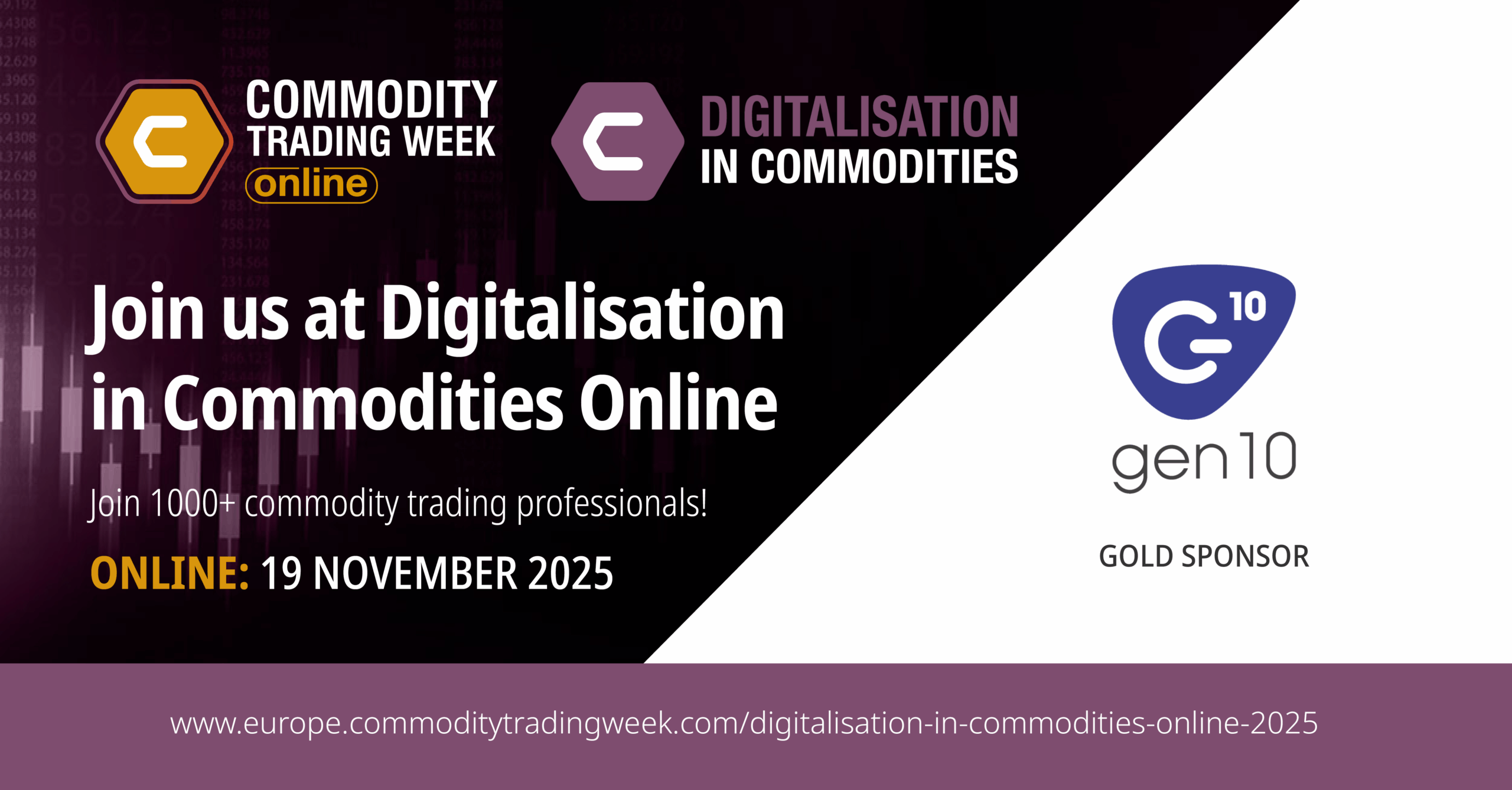As we approach the end of 2023, we’re taking a look back at the year so far and asking what this will mean for commodities in 2024. We’re drawing on what we’ve seen and discussed at industry conferences throughout the year, discussions with our clients, and on various news stories to put together our run-down of the key themes in commodities over the past year – and what they mean for traders and merchants in 2024.
Geopolitical risk
We have continued to see geopolitical risks arising from the Russian war in Ukraine, despite being past the initial disruption. For commodities, we are still seeing the pricing and logistics effects of the war. And the ongoing, and still changing, sanctions mean that even traders whose operations are not directly affected by the conflict still need to manage risks associated with it.
China has become a more significant geopolitical threat this year. Until the Asia-Pacific Economic Cooperation conference in November, businesses following relations between China and the USA were experiencing uncertainty over the countries’ economic cooperation. Although the meeting between Presidents Biden and Xi demonstrated that “full decoupling is off the table”, geopolitical uncertainty remains. And concerns from earlier in the year surrounding warning signs in the Chinese economy, and a tense situation with Taiwan, have not been resolved.
Credit and finance
High interest rates and lender caution have made commodity finance scarcer and more expensive this year. And with global economic growth predicted to slow in 2024 and the possibility of recessions in multiple geographies, this is likely to remain a challenge in the year ahead. And as well as finance being more expensive, because commodity prices remain high, more finance is needed to cover the equivalent shipment compared to only a few years ago, making access even more difficult.
Decarbonisation and the energy transition
The major change commodities traders need to be aware of from the energy transition is a major increase in legislative risk. In the EU alone two major new pieces of ESG legislation have been introduced this year, and both could have a major impact on global commodity flows.
The EU Deforestation Regulation (EUDR) applies to several carbon-intensive commodities and other products, including cocoa, coffee, cattle, palm oil, soya products, wood, rubber, charcoal and paper products. It was adopted in May 2023 and companies have 18 months from that date to ensure compliance, meaning that they need to prove any products entering the EU came from land that has not been deforested.
Affected traders face a two-fold challenge in providing this assurance. The first challenge lies in getting the data in the first place, with the authorities recommending satellite or other imagery and geolocation data. The second challenge lies in providing this traceability in a verifiable way. It’s all very well showing that some of your stock came from a certain location, but do your data management and traceability processes allow you to verify the origin of a specific outbound shipment?
The other major EU legislation this year was the EU Carbon Border Adjustment Mechanism (CBAM). The CBAM will impose a tariff on carbon-intensive products entering the EU, with the reporting period having begun in October 2023. The CBM applies to iron and steel, aluminium, fertilizers, some electricity including from the UK, cement, and hydrogen. The first reports are due at the end of January 2024, and although this is only reporting at present, it will affect pricing in the coming years, and could very well change market dynamics and trade flows, with some production methods becoming uneconomical when selling into the EU market.
And it is not only government legislation that commodity traders need to be aware of. In 2023, the IMO launched a new decarbonisation strategy, aiming for net zero shipping emissions by 2050 and an ambitious at least 40% reduction in shipping CO2 by 2030. There will be mandatory measures that apply regardless of flag state, and the IMO is developing both technical fuel standards and a maritime greenhouse gas emissions pricing mechanism in the medium term, which will also be affecting all commodity traders when they are rolled out.
Supply chain sustainability pressures
Even if your organisation isn’t affected by the incoming legislation, and is not investing heavily in sustainability, given its prevalence in the market, your value chain is still likely to be more concerned with ESG measures. This is likely to mean more due diligence policies and more comprehensive supplier codes of conduct to follow, as well as potentially more requests for traceability data. But it also means opportunities for those traders who can demonstrate the provenance of their goods, particularly if they have the systems in place to do this without slowing down operations or increasing workloads.
There are also a growing number of ESG schemes that clients may wish to take advantage of, which could either be considered a challenge or an opportunity to make the most of optionality and new markets. To take cotton as an example, sustainable cotton currently makes up 30% of the market, and there is a goal to grow to this 50% by just 2025. But within this broad category there are actually at least 15 different recognised schemes all certifying sustainable cotton, including the Better Cotton Initiative, Fairtrade, Organic Cotton, and others.
This lack of standardisation does introduce complexity and means that commodity traders and merchants who want to offer multiple certifications need to ensure they have accurate and verifiable traceability processes in place, with all the document and certificate management to meet their clients’ expectations.
Data challenges
At every conference we attended this year, multiple people discussed how we need more sustainability data, but there were not many solutions for how to access it. Generally, conference speakers agreed that we need better supply chain collaboration, and that standardisation would allow all industry players to make progress, but there is not always appetite for this standardisation.
When addressing supply chain data challenges, the data you already have within your organisation can play a huge part. We often find that trading organisations are collecting more data than they are necessarily using, and may not be using all their data to full effect. For example, you may already be tracking your shipments but using a generic carbon emissions calculator to estimate the emissions based on an industry average. But if you were to combine these data sources, you could create a much more accurate picture, allowing you to price emissions more accurately and make more efficient shipping decisions.
Another comment on the use of supply chain data was that we have access to more data sources than ever before – but that doesn’t mean we are using them to best effect. So, if you are looking to incorporate more data into your commodity trading ecosystem, it’s important to begin by asking what data do you really need, how will it be used, and who is responsible for managing and distributing it across the teams who would benefit from it? We recently wrote a series of 3 articles on data audits for commodity traceability if you would like to explore this subject in more detail. And as mentioned above, the power of these various data sources is only really unlocked when it is combined with other sources of information within your organisation, and accessible to all who need it.
2024 will be the year of data management
In conclusion, although 2023 was not the most disruptive year in recent memory, it still brought a great deal of uncertainty that commodity merchants need to guard against. It also showed that the trends towards traceability and ESG that we have been seeing over the past few years are not going away, rather they are being embedded into law in many cases.
Looking ahead, we believe that this means that 2024 will be the year of data management in commodities. Traders and merchants who are able to take control of their data are in the best place to make the most of the ESG opportunities, as well as their trading, risk management and shipping operations. And data plays a key role in mitigating against geopolitical risks such as responding to disruptive events and performing sanctions due diligence, as well as providing assurance to finance providers.
Data management and Commodity Management Systems are going to be core business concerns, and the best way to maintain smooth and efficient operations in the face of the growing data burden that all traders are now facing.
Many commodity trading firms do not realise just how powerful and flexible modern Commodity Management Systems can be. Nor how much they can be adapted to each business’ unique workflows and the integrations that exist with external data sources. So, if you’d like to find out more about the impact a Commodity Management System could have on your business, get in touch now for an informal chat about your unique situation:



